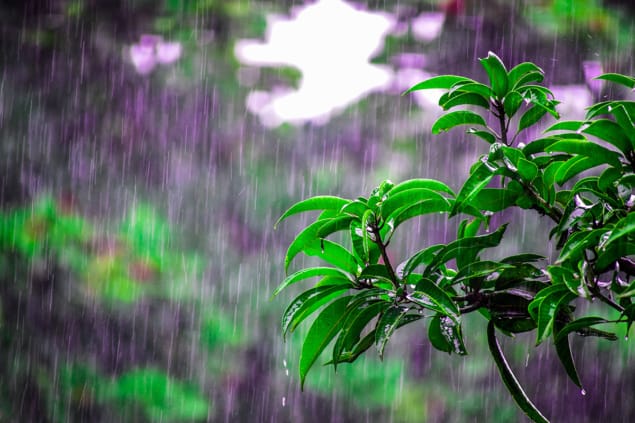
Climate change is making heavy rainfall extremes in the world’s humid and arid areas more intense, according to researchers in Australia and Spain. But for annual precipitation totals, the outlook is mixed.
Although for humid regions a general increase in annual rainfall is likely, the team found, heavier extreme precipitation events in arid regions do not necessarily imply more rain overall. If arid and semi-arid areas receive the same annual rainfall but with a greater fraction falling in more intense bursts, the consequences could be severe.
“More extreme precipitation may contribute to soil erosion and river flooding or flash flooding,” says Markus Donat of Barcelona Supercomputing Center and the University of New South Wales Sydney. “This would also have implications for water and land-use management decisions—in particular in water-stressed regions—to make sure the precipitation that falls within a few days can be captured to be used in drier periods.”
The researchers defined wet and dry regions by local water availability rather than total annual rainfall.
Rising global temperatures are expected to intensify the hydrological cycle by enhancing the atmosphere’s water-holding capacity. While we can confidently expect an increase in the total amount of rainfall worldwide, predicting precipitation changes on a regional scale is much harder; altered circulation patterns will affect individual areas differently.
Previous research suggested total precipitation is likely to increase only slightly in wet regions, whereas dry climate regimes will see much greater increases. An intensification of extreme events was predicted for all climatic zones.
It turns out that the situation is complicated, however, as there are more ways than one to define “wet” and “dry”. And the forecast for each type depends on the definition you choose.
“In that earlier study, we defined ‘wet’ and ‘dry’ based on precipitation amounts,” says Donat. “There had been a bit of discussion after that as to whether these results hold if wet and dry were defined in a water availability sense.”
Water availability is the difference between water delivered to the ground as rain and that lost to the atmosphere through evapotranspiration. It’s an important measure because even high-precipitation regions can experience water stress if much of what falls disappears into the air before it can be used.
Donat and colleagues divided Earth’s land area into arid, semi-arid, sub-humid and humid zones based on this precipitation–evaporation balance. They looked at rainfall records going back to 1951 for each zone as well as compiling the results of 25 climate simulations out to 2100 for two representative concentration pathways: RCP4.5, which sees greenhouse-gas levels begin to plateau around 2060; and RCP8.5, where levels rise steadily throughout the century.
Although there was some variability at the local scale, the general trend across all regimes was for extreme precipitation events—the one day in a given year that saw the greatest amount of rainfall—to become even more intense.
When it came to total annual rainfall, however, a robust prediction was only possible for humid and sub-humid zones, which can both expect increases. For the drier regions, the projections given by the climate models diverged significantly, averaging out to approximately zero change.
The difference between how warming affects annual precipitation rates in wet and dry climates might be partly a statistical effect, according to Donat. “The signal-to-noise ratio -that is, the magnitude of the long-term change compared to the magnitude of year-to-year variability – seems to be larger in the humid compared to the arid regions, which makes it harder to detect robust changes in the more arid regimes,” he says.
Donat and colleagues reported their findings in Environmental Research Letters (ERL).



